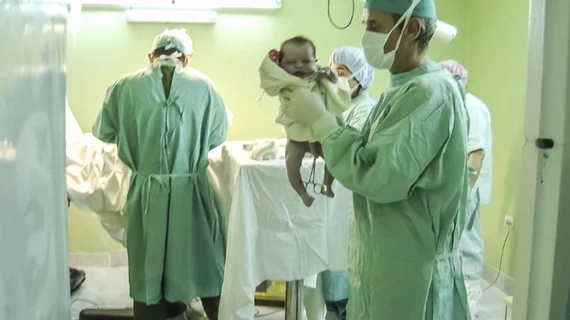New imaging tool could change how decisions are made in the labor and delivery room
A new imaging tool could change the way clinicians make decisions in the labor and delivery room.
Electromyometrial imaging (EMMI) creates 3D maps of contractions during labor in real-time, which can help clinicians track contraction patterns and make decisions regarding patient management.
EMMI is achieved with two types of noninvasive imaging—a fast MRI scan of the uterus obtained at 37 weeks gestation or during early term pregnancies, and a multi-channel surface scanning electromyogram that uses sensors on the abdomen to measure contractions during labor. Data from each of these are combined to create 3D maps of the uterus. On the maps, warm colors highlight the early onset of contractions, cool colors represent areas active later in contractions and gray areas indicate areas that are inactive.
The images are acquired over an extended amount of time, enabling clinicians to visualize contraction patterns and potential complications.
Previously tested in sheep, experts recently developed a way to test the effectiveness of EMMI in a small group of women with healthy pregnancies. The study was led by Yong Wang, PhD, and Alan Schwartz, MD, PhD, at Washington University in St. Louis, and Alison Cahill, MD, at the University of Texas at Austin, and was supported by NIH’s Eunice Kennedy Shriver National Institute of Child Health and Human Development (NICHD).
The human study included 10 participants who underwent EMMI during clinic visits. Experts were able to use the data acquired during those visits to describe uterine contractions and how they begin, spread and end in detail, which could help clinicians recognize potential complications before they advance in urgency, the experts suggested.
In a prepared statement, NICHD Director Diana W. Bianchi, MD, suggested that, in the future, the new technology could help clinicians answer critical questions during pregnancy and labor.
“With additional research, the tool may potentially predict who is at risk to deliver prematurely or whose labor pattern will eventually result in the need for a cesarean section delivery,” Bianchi said. “This will also help care providers evaluate whether a treatment or intervention is working.”
The new research is available in Nature Communications.

